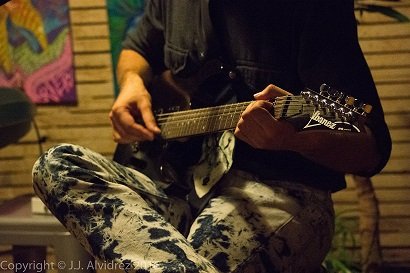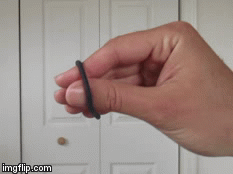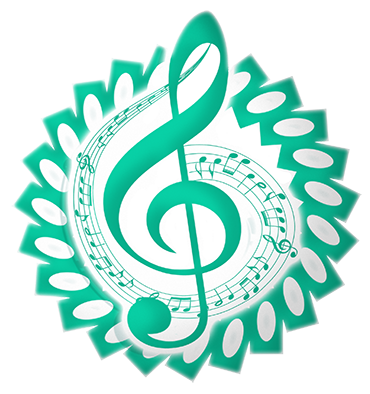Winning the Battle Against Musical Injury
This post will explore what it's like to experience injury from playing a musical instrument and what can be done to alleviate and prevent it.
The Onset
I used to play guitar for a flamenco duo. My partner, having more experience than me, had a very keen business sense and would get us four or five gigs per week. Our brand of flamenco converted popular songs into the Spanish genre - and this involved adding a lot of shredding to otherwise simple songs. Each gig was at least two hours long, sometimes even three or four. Needless to say, fingers were flying. I was often praised for my fast playing. These words went to my head and I would try to play even faster.

Fingers were flying (image by Juan Alvidrez)
I first felt the pain several months into regular gigging. I didn't pay it much mind - it would always go away by morning time. It wasn't until a year later, months after I left the band and moved on to personal projects, while arranging a guitar solo consisting mostly of barre chords, that I felt a pain in my wrist that didn't disappear after a good night's sleep.
At first, my left hand would only hurt when bent at the wrist. Then, it started hurting more or less all the time. I began feeling weakness in my pinky and ring fingers. Then, those same fingers started going numb after every time I practiced. I would get "trigger fingers", first only in the morning upon waking, then throughout the day (trigger fingers are when you try to slowly open your hand from a fist and the fingers seem to "snap" from place to place, instead of smoothly opening).
The fact that I dedicated lots of time to multiple instruments didn't help. I tried taking time off - but there's only so much time you can take off when you have regular gigs to play. I would refrain from playing as much as a week at a time and it would help for a bit, but the pain always came back.
I was terrified. My condition would get slightly better, than worse, than better, than worse again. Pain put aside, my playing was working on an objective level. I was able to play all my music well and I still saw regular improvements from practicing. No one could tell that I was in pain by watching my playing. Since I was still able to perform well and the pain varied from day to day, I figured that maybe the problem would gradually go away. But after months of wishful thinking, I decided to seek professional help.
Doctors and Massage Therapists
My GP asked me to perform various movements with my left hand and concluded that I'm experiencing tendinitis of the wrist. I was doing workouts with kettlebells at the time, which my GP told me to stop - the gripping of heavy weights wasn't helping my condition. He prescribed several exercises, advised me to play less for some time, and referred me to a specialist. I was also given a wrist splint, which I was to wear at night to keep my wrist from moving while I was sleeping - apparently that exasperates the injury.
On average, tendinitis takes about three weeks to heal. That is, however, if all activity is completely ceased. Many professional musicians cannot afford to take this much time off. We do have to cut down, at least on practicing, for some time. Much more so than the exercises, as many musicians can imagine, cutting down was the hardest part. The good news is, many exercises build endurance, in addition to helping the healing process. Once healed, regular practicing regimen can be resumed.

The Splint
The specialist that I was referred to told me that in addition to tendinitis, the weakness and numbness in my pinky and ring finger was due to cubital tunnel syndrome. He taught me more exercises and stretches, which I were to perform every day. He also suggested massage.
I gave up the kettlebell workouts, but continued staying active through martial arts classes that I was taking at the time. One of my classmates, upon hearing about my condition, referred me to a manual therapist. The session that I booked with him consisted of series of massages not only on my wrist, but all the way up my arm and even my back. The manual therapist said that these problems are never isolated to just one area - they are usually signs of tension across the entire body. At the end of my session, I learned even more stretches and exercises.
I'm lucky enough to be friends with yoga teachers, massage therapists, and movement professionals, many of whom offered advice that's been invaluable. I did stretches and exercises on a regular basis, began practicing yoga, and went in for massages. After months of work, the pain finally went away. It has been about a year and a half since then and I've only seen one resurgence of the pain, which I was able to successfully deal with. My playing is now better than ever, I'm playing regular gigs, and my hands feel fine.
Exercises and Stretches
I would like to share the various things that I did to get my hands to be healthy again, but before I do, I'd like to point out that if you're feeling any regular pain or discomfort as a result of a musical injury - please don't simply stick to online articles, do seek professional help. A specialist's opinion will be more personalized to your specific issue and well worth the money. If you do not experience any pain or discomfort, the exercises mentioned here will not only strengthen your hands and act as preventative measures - they will improve your playing and dexterity as well.
Warm-ups
I learned these simple joint rotations in martial arts and found that they're great for getting the blood flowing to the arms and hands, as well as loosening them up and lightly stretching them.



Do each movement ten times, then reverse the direction
Stretches
At the peak of my pain, I was prescribed to do these three stretches once every hour every day for a few weeks, holding each stretch for at least thirty seconds. I find that it is now sufficient to do them just before and after I play.



Don't use too much strength when doing these
This next exercise helps strengthen the wrist and will improve the symptoms of tendinitis.

You need to rest your arm on an edge of a table
Perform this movement about 10 or 15 times per session. Go slow, holding each position for about three seconds. If there is pain, be delicate and gradually ease off. At the peak of my injury, this was a painful exercise at first - thus I performed it with appropriate care. Eventually it stopped hurting.
My manual therapist called these next stretches "old world stretches". They are great alternatives to doing the full three-stretch routine for each hand if you're on the go, like right before a gig.


It is good to hold these for at least thirty seconds each.
During stretching, be sure to take slow, deep breaths and relax as much as possible. As mentioned earlier, stretches should be held for thirty seconds or longer. Do not use very much strength during stretching. Flexibility comes with time and practice, not brute force.
Nerve Exercises
These next three moves helped fix the weakness and the numbness that I was experiencing in my pinky and ring finger. Do these slowly and with great care at first - you're working with nerves, thus you want to be delicate.



At first, do these exercises three times each, then after a few weeks move up to five at a time. The first and the last ones should be done for the other hand as well. Perform the last one with special care - you are using your neck to stretch the nerve that is located in your forearm.
These next moves are called flossing.

You'll notice that the palms of my arms are facing the same direction as they rotate. Feel free to switch it up and face one palm in the opposite direction. You can also gently move your neck from side to side and also rotate it as you move the arms. As with all these nerve stretches, go slow, be careful, and listen to your body.

Do about 10-15 of these at a time. My neck twists to my shoulder in this one, as I stretch my arm out through my pinky and ring finger. After a few weeks of performing this exercise, you can start doing it without twisting your head.
Extensor Strength Building
When we practice our music, we build strength in the muscles that are involved in tightening or closing our fingers. We do not, however, practice and strengthen muscles involved in opening up the hand. This creates an imbalance. Exercising these muscles (called extensor or reverse grip muscles) will help give us more durable wrists and forearms and decrease the risk of injury.
You can exercise these muscles with rubber bands or hair-ties, like shown in the image bellow.

There are also bands designed specifically for this purpose - some even come with finger-holes. This one is only $7 on Amazon: https://www.amazon.com/Finger-Extensor-Hand-Forearm-Exerciser/dp/B074JJ4D24
Technique and Posture
This is actually perhaps the most important area when it comes to avoiding injury while playing music. Proper technique and posture is absolutely vital if one wants to sustainably continue playing music. One of the pitfalls of self-teaching music is not having someone to check our form. This is dangerous, as injury doesn't show up right away - sometimes even for years, making it easy to think that pleasing musical results achieved through faulty technique are acceptable. I learned much when I began reading books on technique and seeing teachers regularly.
The most important musical technique is relaxation: always strive to be as relaxed as you can possibly be while playing, only using as much energy and effort needed to play a particular note and not a drop more. Pay attention to tension not only in the body parts involved in playing the instrument (hands, usually), but also the entire body. One time when I did this, for example, I realized that my knees would tense up when I played difficult passages. Learning to relax them greatly improved my playing. From time to time I would notice other areas with tension - relaxation does not happen in one session, it is an ongoing practice. Breathing properly, through the stomach, will encourage full body relaxation. Meditating on a regular basis outside of music can also greatly help.
Another technique that is universal across all instruments is the emphasis on neutral wrist position. This is when your wrist is essentially straight, like in the image bellow.

Neutral wrist position
Our fingers perform best in this position. It is true that certain chords or fingerings on some instruments will cause us to deviate from this wrist position, no matter how hard we try to avoid it. That is fine, as long as we get right back to the proper position as soon as we move on from that particular chord or fingering. Be sure to research good form specific to your instrument.
I used to play guitar, especially barre chords, with a bent wrist for a long time. After my injury, I made sure to always correct my wrist. Being mindful of this habit improved my playing and helped my hands recover. When I am out at shows or open mics, I see many very talented guitarists playing barre chords with bent wrists. It is a dangerous thing to do, as you may be able to play very well, produce a beautiful sound, and not know that anything is wrong until years down the road. It isn't always appropriate to approach folks in a public setting, as a stranger, and grill them about technique. If you are a guitarist, please be mindful of your wrist.


It is very important to play with a straight wrist
Lastly, posture is very important. If sitting down, it is generally good to have both feet planted firmly on the ground, sitting on the chair with our sit bones, with an upright body posture. Shoulders should be broad but loose. When we play in this position, we should feel the energy being drawn up through our feet and then our core, before being dispersed through our shoulders and arms into the instrument. Getting the whole body involved like this will help take the strain away from our hands and distribute the workload more evenly.
When standing up, we want straighten out and keep an erect posture, feet on the ground, feeling stable and secure.
Additional Practices
It is worth mentioning that there are various other things that I did which could have contributed to my recovery and continued musical fitness. Regular exercise will help our overall health, including the health of our muscles and their ability to recover. I took up running and once my wrists were healed enough, began doing body weight exercises to stay in shape.
Also, a little over a year ago I became interested in exercises that train the body to be able to withstand cold temperatures. I took Wim Hof's 10-week course, which teaches these skills. Ability to stay warm in cold environments is said to boost cardiovascular function and blood flow. Meditation and yoga are also involved in these techniques, both of which are also beneficial to our overall health and can translate positively into our musical practice. For more info on these practices, google Wim Hof. He is a fine teacher and has educational events all around the world, as well as online classes.
Additionally, I began treating practicing music like a sport. Once my pain was gone, I began pushing myself again, to the point where I would just barely start feeling pain - then I would rest and take breaks. I would have practice days and rest days - and it all, of course, led up to gig days. All the while, I continued stretching and exercising. After some time, my endurance and stamina improved and I was able to play longer and more complicated material without feeling pain. Developing this sort of relationship with pain and rest has had a positive impact on my music-making.
Regular massage work can also do wonders for the physically active body.
Conclusion
Musical injuries are not fun in the slightest. We all want to play our instruments well into old age and we all want to continue getting better and better. It would benefit all of us to learn various stretches, as well as proper playing techniques, which can help us improve the health of our limbs and the quality of our music. It also helps to remember that we don't make music with just our hands - the entire body is involved. Taking care of ourselves on all levels brings with it fantastic rewards, both within and outside of music.
This article is merely a primer. If you are experiencing injuries, please see a professional. If you are self-taught and are looking for guidance on technique, please consult with a teacher. There is always much to learn and wonderful people who are willing to teach us are all around us, if only we're willing to look and reach out. If there is one thing to take from this article, it should be this: stretch regularly, breathe, and relax, relax, relax! If you'd like to read more on these subjects, the book "The Art of Practicing" by Madeline Bruser is a fantastic resource for musicians of any level. "The Music Lesson" by Victor Wooten is also an absolute gem.
I sincerely hope that all of us who enjoy creating beautiful music continue doing so for decades to come. Please take care of your music-making parts!
Thank you for reading! Most images in this post were taken by me, except the first image by Juan
Great stuff, important information for all musicians! Resteemed and it will be part of the next curation with a SBD share.
Your post has been supported and upvoted from the Classical Music community on Steemit as it appears to be of interest to our community. You can find details about us below.

The classical music community at #classical-music and Discord.
Follow our community accounts @classical-music and @classical-radio.
Follow our curation trail (classical-radio) at SteemAuto
Had to take my time to read this.... I really learnt alot from your post.... So many musicians have been playing music in a way that will affect their body negatively in the future....
I'm happy you recovered
Thank you! Yeah, we gotta take care of ourselves. An entirely different article could be written about preserving vocal technique and hearing protection.